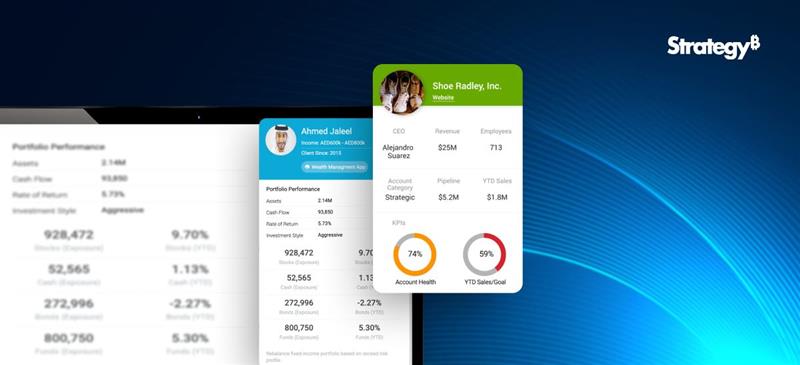By proactively utilising retail analytics, companies can rapidly act upon essential insights drawn from their data, resulting in notable improvements in their business outcomes. The most successful retailers also leverage external datasets to support their business strategy.
The initial and critical step towards achieving this is establishing a data foundation that combines internal and external data sources, providing a complete view of the customer experience.
To deliver the experience customers want and to remain competitive, companies must harness the power of retail analytics. In this blog, we will cover the top trends in retail analytics retailers use to get ahead.
The Primary Developments in Retail
There are six main trends in retail analytics that companies are using to gain an advantage. These include:
- Develop Individualized Experiences for a Single Customer
- Utilise Predictive Analysis to Anticipate
- Develop Dynamic Automated Pricing Models
- AR and VR in Retail
- Subscription-based Business Models
- Integrate AI & ML
These capabilities can only be achieved when your data is combined into a single, unified source of truth. To stay ahead, many retailers seek the assistance of data analytics consultants (such as those provided by Beinex) to create and implement the necessary modern data infrastructure.
1. Develop Individualized Experiences for a Single Customer
A survey was conducted on 1,000 individuals aged 18-64 to assist brands in improving relationships and building customer loyalty. The research found that 80% of respondents are likelier to engage with a company that provides personalised experiences. This demand for personalisation has grown even further since then. In a 2020 article on creating differentiation in retail, McKinsey suggests that the most effective retail experiences “involve the customer in the conversation and use data to establish tailored personalisation.”
Of course, accomplishing this requires a Customer 360 perspective, which entails a comprehensive understanding of customer data across all brand interactions. These interactions may include transactional data, customer feedback, shopping preferences, website and mobile app activity, and more.
2. Utilise Predictive Analysis to Anticipate
Retailers are utilising sophisticated analytics that employs machine learning algorithms to make predictions based on patterns identified in customer data. These advanced algorithmic models allow retailers to determine how much of a particular product or service customers will likely buy during a specific timeframe.
Business executives use demand forecasting to encourage their most profitable customers to return to the store by providing timely notifications and valuable offers on relevant items. As a result, retailers can ensure that they are timing their shipments to ensure that the products their customers desire are available on store shelves while enhancing their supply chain.
3. Develop Dynamic Automated Pricing Models
Retailers frequently need to maintain a portion of their prices at a superficial level to remain competitive. These low-priced items, also known as doorbusters and key-value items (KVIs), are often the top sellers and traffic generators that shape a retailer’s pricing reputation. KVIs can account for up to 80% of revenue but only half of a retail company’s profit. To compensate for the low margin on KVIs, retailers tend to increase the prices of their higher-margin items and position them strategically alongside doorbusters and KVIs in creative ways to encourage shoppers to add higher-margin products to their shopping carts.
Retailers use dynamic pricing algorithms to adjust their product prices according to market demand and inventory levels, optimising their profit margins. These algorithms provide automated recommendations for pricing that enable retailers to make timely, informed decisions to improve their financial performance. To achieve maximum effectiveness, it is recommended that retailers work with a data analytics consulting firm to develop a tailored solution that aligns with their specific business objectives, operational processes, and customer needs.
4. AR and VR in Retail
The use of augmented reality (AR) and virtual reality (VR) in the retail industry is becoming more common, offering new and creative ways for customers to shop and experience products. By allowing customers to virtually try on products and creating immersive shopping experiences, AR and VR are changing how retailers interact with their customers. As per current retail technology trends, more and more retailers are integrating AR and VR into their strategies to improve customer experiences and boost sales.
5. Subscription-based Business Models
Subscription-based business models are gaining popularity as consumers seek convenient and personalised experiences, especially in industries like beauty and fashion. These models offer a unique opportunity for retailers to build a loyal customer base by regularly providing curated and customised products. Moreover, subscription models ensure a predictable revenue stream for businesses and reduce customer churn. As the subscription economy evolves, retailers must develop innovative ways to differentiate themselves and provide added value to their customers.
6. Integrate AI & ML
Artificial Intelligence (AI) and Machine Learning (ML) in retail is becoming more common. Retailers can use AI and ML for chatbots, personalisation, and predictive analytics to enhance the shopping experience for customers. By analysing large amounts of data, retailers can predict consumer behaviour and offer customised recommendations and promotions, resulting in better customer engagement and loyalty. As AI and ML technologies continue to advance, their potential impact on the retail industry is anticipated to be significant.
Summing Up
Retailers must prioritise adopting a customer-centric data and analytics approach to remain competitive against online and offline rivals. As technology advances and AI models become more sophisticated through advanced machine learning algorithms, retailers must utilise retail analytics to uncover valuable insights that can lead to novel methods of enhancing customer loyalty.
Advanced Analytics services from Beinex explain the why and how of change in your enterprise – the top line, bottom line behaviours and everything in between, from your organisational data. With minimal human intervention, it gives decision-makers the ability to have a firm grip on credible but previously hidden insights. As a decision-maker, you can employ data-driven insights and execute insights-led planning for your enterprise with telling and far-reaching effects.




